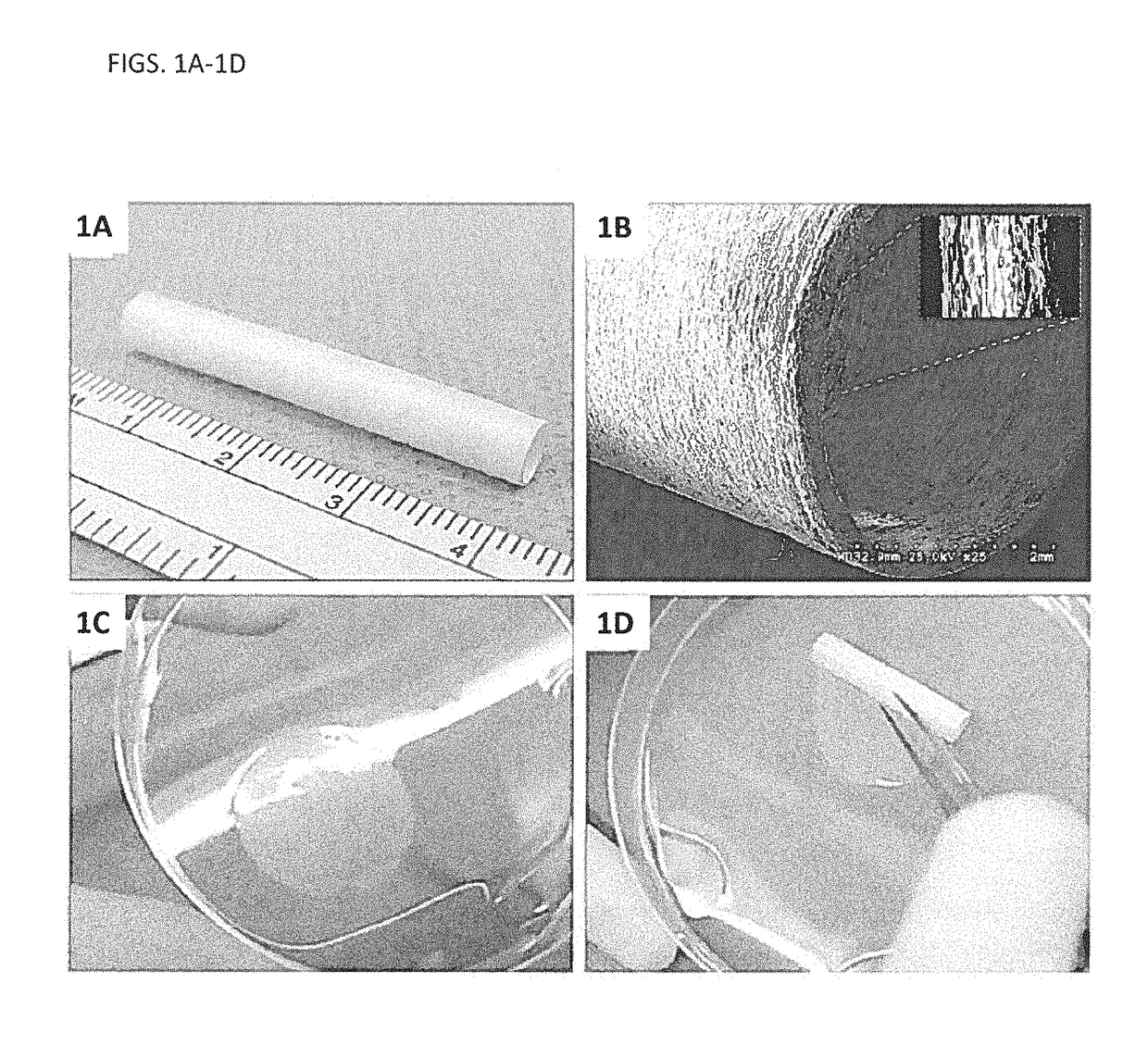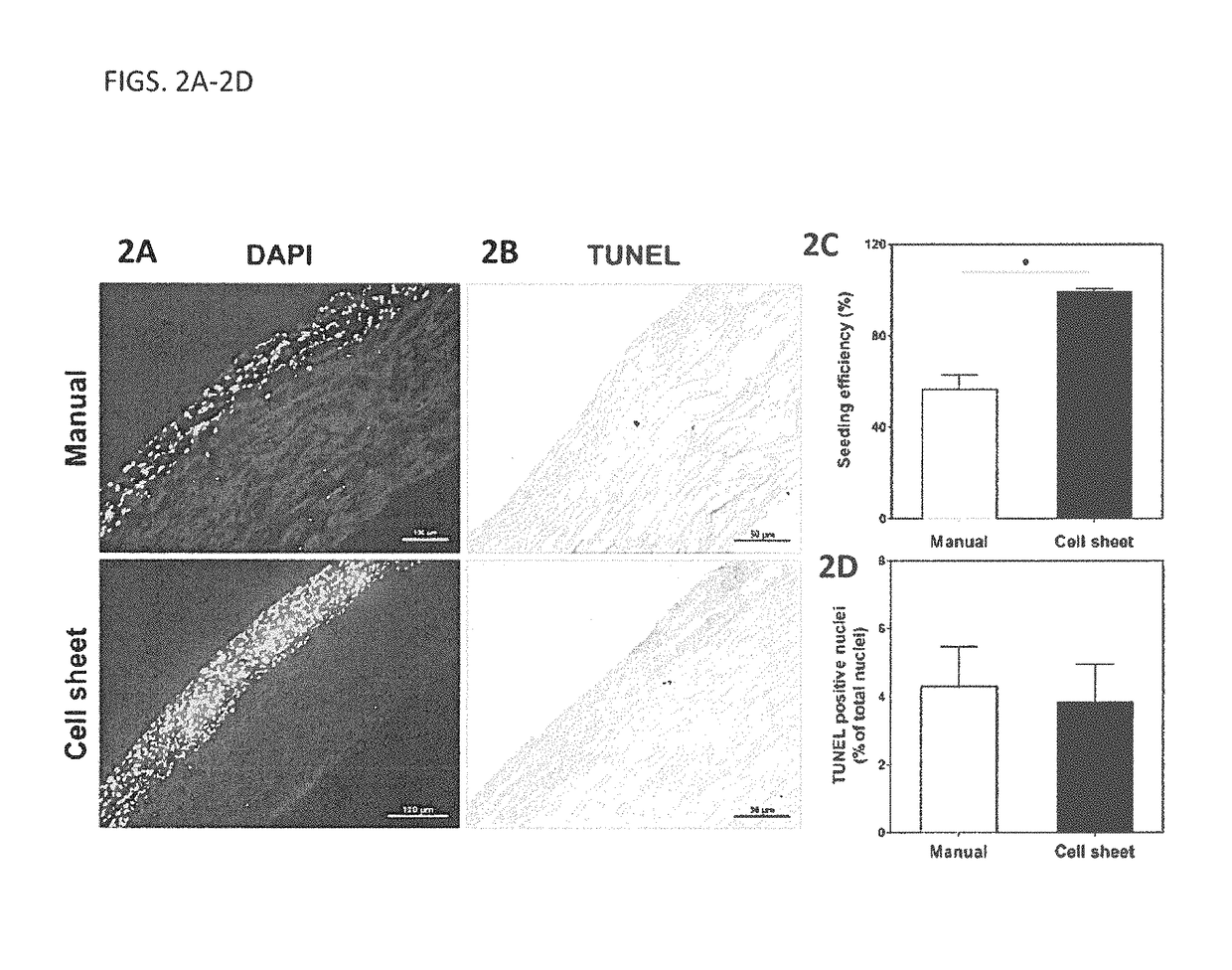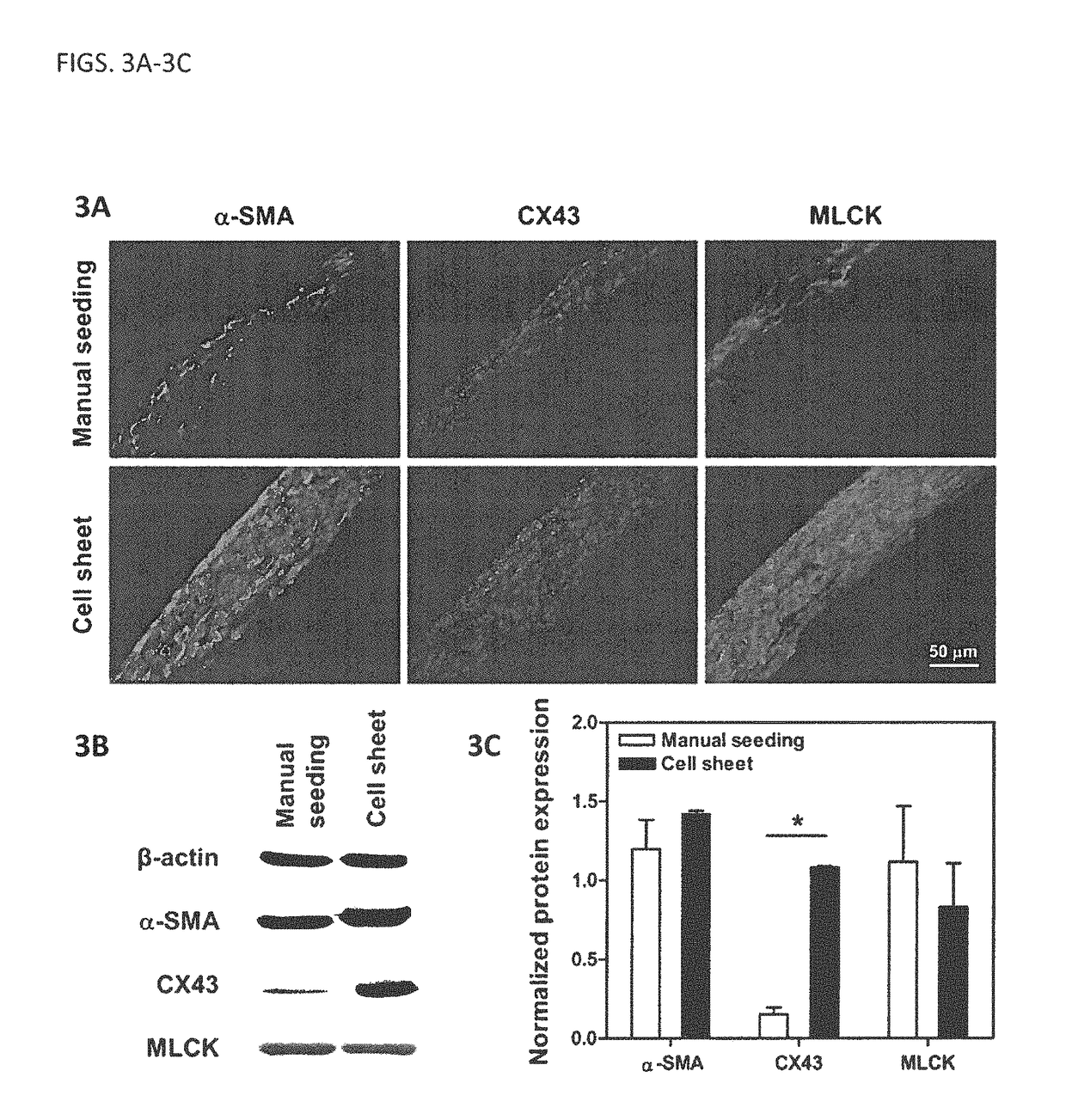Laminous vascular constructs combining cell sheet engineering and electrospinning technologies
a technology of cell sheet engineering and vascular constructs, applied in the field of laminous vascular constructs combining cell sheet engineering and electrospinning technologies, can solve the problems of vascular reconstruction remaining a clinical dilemma, affecting the clinical effect of vascular reconstruction, and presenting a lifetime risk of thrombosis and infection for permanent prosthetic vascular graft materials, so as to improve the uniformity and effective cell seeding, prevent acute thrombosis, and prolong the effect of pa
- Summary
- Abstract
- Description
- Claims
- Application Information
AI Technical Summary
Benefits of technology
Problems solved by technology
Method used
Image
Examples
example 1
[0091]Tissue engineering is an approach to create functional small-diameter (<5 mm) blood vessels by combining autologous cells with a natural and / or synthetic scaffold under suitable culture conditions, resulting in a tubular construct that can be implanted in vivo. A vascular scaffold was fabricated by electrospinning poly(ε-caprolactone) (PCL) and type I collagen that mimics the structural and biomechanical properties of native vessels. In this study, a smooth muscle cell (SMC) sheet was combined with the electrospun vascular scaffolds to produce a more mature smooth muscle layer as compared to the conventional cell seeding method. The pre-fabricated SMC sheet, wrapped around the vascular scaffold, provided a mature smooth muscle layer that expressed strong cell-to-cell junction and contractile proteins. Moreover, bioreactor-associated preconditioning of the SMC sheet-combined vascular scaffold maintained high cell viability and phenotypes, as well as cellular infiltration into t...
PUM
| Property | Measurement | Unit |
|---|---|---|
| shear stress | aaaaa | aaaaa |
| wall pressure distribution | aaaaa | aaaaa |
| wall pressure distribution | aaaaa | aaaaa |
Abstract
Description
Claims
Application Information
 Login to View More
Login to View More - R&D
- Intellectual Property
- Life Sciences
- Materials
- Tech Scout
- Unparalleled Data Quality
- Higher Quality Content
- 60% Fewer Hallucinations
Browse by: Latest US Patents, China's latest patents, Technical Efficacy Thesaurus, Application Domain, Technology Topic, Popular Technical Reports.
© 2025 PatSnap. All rights reserved.Legal|Privacy policy|Modern Slavery Act Transparency Statement|Sitemap|About US| Contact US: help@patsnap.com



